Serving Fountain Valley and Orange County communities for over 35 years. (714) 343-9294 MICAH STOVALL #DRE01240489 Real Estate
Real Estate Just Listed Today in Fountain Valley CA
-
$575,000
17200 Newhope Street #217
Fountain Valley, CA -
$419,999
17200 Newhope Street #109
Fountain Valley, CA -
$659,990
17168 Newhope #222
Fountain Valley, CA -
$1,435,000
18016 Roch Court
Fountain Valley, CA -
$1,550,000
18021 Roch Court
Fountain Valley, CA -
$1,500,000
9429 El Valle Ave
Fountain Valley, CA -
$755,000
17200 Newhope St #23
Fountain Valley, CA -
$2,295,000
17413 Siena Lane
Fountain Valley, CA -
$2,000,000
11383 Stonecress Avenue
Fountain Valley, CA -
$889,000
17200 NEWHOPE St #31
Fountain Valley, CA
Lot Size2.55 ac
Home Size1,040 sqft
Beds2 Beds
Baths2 Baths
Lot SizeN/A
Home Size572 sqft
Beds1 Bed
Baths1 Bath
Lot SizeN/A
Home Size1,112 sqft
Beds2 Beds
Baths2 Baths
Lot Size3,315 sqft
Home Size1,811 sqft
Beds3 Beds
Baths2.5 Baths
Lot Size3,673 sqft
Home Size1,920 sqft
Beds4 Beds
Baths3.5 Baths
Lot Size7,201 sqft
Home Size1,875 sqft
Beds3 Beds
Baths2 Baths
Lot Size6,277 sqft
Home Size1,680 sqft
Beds2 Beds
Baths2 Baths
Lot Size5,951 sqft
Home Size3,408 sqft
Beds4 Beds
Baths4 Baths
Lot Size6,256 sqft
Home Size2,929 sqft
Beds6 Beds
Baths4.5 Baths
Lot SizeN/A
Home Size1,920 sqft
Beds3 Beds
Baths3 Baths
-
Lot Size2.55 ac
Home Size1,040 sqft
Beds2 Beds
Baths2 Baths
-
Lot SizeN/A
Home Size572 sqft
Beds1 Bed
Baths1 Bath
-
Lot SizeN/A
Home Size1,112 sqft
Beds2 Beds
Baths2 Baths
-
Lot Size3,315 sqft
Home Size1,811 sqft
Beds3 Beds
Baths2.5 Baths
-
Lot Size3,673 sqft
Home Size1,920 sqft
Beds4 Beds
Baths3.5 Baths
-
Lot Size7,201 sqft
Home Size1,875 sqft
Beds3 Beds
Baths2 Baths
-
Lot Size6,277 sqft
Home Size1,680 sqft
Beds2 Beds
Baths2 Baths
-
Lot Size5,951 sqft
Home Size3,408 sqft
Beds4 Beds
Baths4 Baths
-
Lot Size6,256 sqft
Home Size2,929 sqft
Beds6 Beds
Baths4.5 Baths
-
Lot SizeN/A
Home Size1,920 sqft
Beds3 Beds
Baths3 Baths
-
$575,000
17200 Newhope Street #217
Fountain Valley CA Real Estate with the Largest Lots
-
$575,000
17200 Newhope Street #217
Fountain Valley, CA -
$419,999
17200 Newhope Street #109
Fountain Valley, CA -
$659,990
17168 Newhope #222
Fountain Valley, CA -
$1,435,000
18016 Roch Court
Fountain Valley, CA -
$1,550,000
18021 Roch Court
Fountain Valley, CA -
$1,500,000
9429 El Valle Ave
Fountain Valley, CA -
$755,000
17200 Newhope St #23
Fountain Valley, CA -
$2,295,000
17413 Siena Lane
Fountain Valley, CA -
$2,000,000
11383 Stonecress Avenue
Fountain Valley, CA -
$889,000
17200 NEWHOPE St #31
Fountain Valley, CA
Lot Size2.55 ac
Home Size1,040 sqft
Beds2 Beds
Baths2 Baths
Lot SizeN/A
Home Size572 sqft
Beds1 Bed
Baths1 Bath
Lot SizeN/A
Home Size1,112 sqft
Beds2 Beds
Baths2 Baths
Lot Size3,315 sqft
Home Size1,811 sqft
Beds3 Beds
Baths2.5 Baths
Lot Size3,673 sqft
Home Size1,920 sqft
Beds4 Beds
Baths3.5 Baths
Lot Size7,201 sqft
Home Size1,875 sqft
Beds3 Beds
Baths2 Baths
Lot Size6,277 sqft
Home Size1,680 sqft
Beds2 Beds
Baths2 Baths
Lot Size5,951 sqft
Home Size3,408 sqft
Beds4 Beds
Baths4 Baths
Lot Size6,256 sqft
Home Size2,929 sqft
Beds6 Beds
Baths4.5 Baths
Lot SizeN/A
Home Size1,920 sqft
Beds3 Beds
Baths3 Baths
-
Lot Size2.55 ac
Home Size1,040 sqft
Beds2 Beds
Baths2 Baths
-
Lot SizeN/A
Home Size572 sqft
Beds1 Bed
Baths1 Bath
-
Lot SizeN/A
Home Size1,112 sqft
Beds2 Beds
Baths2 Baths
-
Lot Size3,315 sqft
Home Size1,811 sqft
Beds3 Beds
Baths2.5 Baths
-
Lot Size3,673 sqft
Home Size1,920 sqft
Beds4 Beds
Baths3.5 Baths
-
Lot Size7,201 sqft
Home Size1,875 sqft
Beds3 Beds
Baths2 Baths
-
Lot Size6,277 sqft
Home Size1,680 sqft
Beds2 Beds
Baths2 Baths
-
Lot Size5,951 sqft
Home Size3,408 sqft
Beds4 Beds
Baths4 Baths
-
Lot Size6,256 sqft
Home Size2,929 sqft
Beds6 Beds
Baths4.5 Baths
-
Lot SizeN/A
Home Size1,920 sqft
Beds3 Beds
Baths3 Baths
-
$575,000
17200 Newhope Street #217
Largest Price Reduced Real Estate in Fountain Valley CA
-
$575,000
17200 Newhope Street #217
Fountain Valley, CA -
$419,999
17200 Newhope Street #109
Fountain Valley, CA -
$659,990
17168 Newhope #222
Fountain Valley, CA -
$1,435,000
18016 Roch Court
Fountain Valley, CA -
$1,550,000
18021 Roch Court
Fountain Valley, CA -
$1,500,000
9429 El Valle Ave
Fountain Valley, CA -
$755,000
17200 Newhope St #23
Fountain Valley, CA -
$2,295,000
17413 Siena Lane
Fountain Valley, CA -
$2,000,000
11383 Stonecress Avenue
Fountain Valley, CA -
$889,000
17200 NEWHOPE St #31
Fountain Valley, CA
Lot Size2.55 ac
Home Size1,040 sqft
Beds2 Beds
Baths2 Baths
Lot SizeN/A
Home Size572 sqft
Beds1 Bed
Baths1 Bath
Lot SizeN/A
Home Size1,112 sqft
Beds2 Beds
Baths2 Baths
Lot Size3,315 sqft
Home Size1,811 sqft
Beds3 Beds
Baths2.5 Baths
Lot Size3,673 sqft
Home Size1,920 sqft
Beds4 Beds
Baths3.5 Baths
Lot Size7,201 sqft
Home Size1,875 sqft
Beds3 Beds
Baths2 Baths
Lot Size6,277 sqft
Home Size1,680 sqft
Beds2 Beds
Baths2 Baths
Lot Size5,951 sqft
Home Size3,408 sqft
Beds4 Beds
Baths4 Baths
Lot Size6,256 sqft
Home Size2,929 sqft
Beds6 Beds
Baths4.5 Baths
Lot SizeN/A
Home Size1,920 sqft
Beds3 Beds
Baths3 Baths
-
Lot Size2.55 ac
Home Size1,040 sqft
Beds2 Beds
Baths2 Baths
-
Lot SizeN/A
Home Size572 sqft
Beds1 Bed
Baths1 Bath
-
Lot SizeN/A
Home Size1,112 sqft
Beds2 Beds
Baths2 Baths
-
Lot Size3,315 sqft
Home Size1,811 sqft
Beds3 Beds
Baths2.5 Baths
-
Lot Size3,673 sqft
Home Size1,920 sqft
Beds4 Beds
Baths3.5 Baths
-
Lot Size7,201 sqft
Home Size1,875 sqft
Beds3 Beds
Baths2 Baths
-
Lot Size6,277 sqft
Home Size1,680 sqft
Beds2 Beds
Baths2 Baths
-
Lot Size5,951 sqft
Home Size3,408 sqft
Beds4 Beds
Baths4 Baths
-
Lot Size6,256 sqft
Home Size2,929 sqft
Beds6 Beds
Baths4.5 Baths
-
Lot SizeN/A
Home Size1,920 sqft
Beds3 Beds
Baths3 Baths
-
$575,000
17200 Newhope Street #217
Most Expensive Real Estate in Fountain Valley CA
-
$575,000
17200 Newhope Street #217
Fountain Valley, CA -
$419,999
17200 Newhope Street #109
Fountain Valley, CA -
$659,990
17168 Newhope #222
Fountain Valley, CA -
$1,435,000
18016 Roch Court
Fountain Valley, CA -
$1,550,000
18021 Roch Court
Fountain Valley, CA -
$1,500,000
9429 El Valle Ave
Fountain Valley, CA -
$755,000
17200 Newhope St #23
Fountain Valley, CA -
$2,295,000
17413 Siena Lane
Fountain Valley, CA -
$2,000,000
11383 Stonecress Avenue
Fountain Valley, CA -
$889,000
17200 NEWHOPE St #31
Fountain Valley, CA
Lot Size2.55 ac
Home Size1,040 sqft
Beds2 Beds
Baths2 Baths
Lot SizeN/A
Home Size572 sqft
Beds1 Bed
Baths1 Bath
Lot SizeN/A
Home Size1,112 sqft
Beds2 Beds
Baths2 Baths
Lot Size3,315 sqft
Home Size1,811 sqft
Beds3 Beds
Baths2.5 Baths
Lot Size3,673 sqft
Home Size1,920 sqft
Beds4 Beds
Baths3.5 Baths
Lot Size7,201 sqft
Home Size1,875 sqft
Beds3 Beds
Baths2 Baths
Lot Size6,277 sqft
Home Size1,680 sqft
Beds2 Beds
Baths2 Baths
Lot Size5,951 sqft
Home Size3,408 sqft
Beds4 Beds
Baths4 Baths
Lot Size6,256 sqft
Home Size2,929 sqft
Beds6 Beds
Baths4.5 Baths
Lot SizeN/A
Home Size1,920 sqft
Beds3 Beds
Baths3 Baths
-
Lot Size2.55 ac
Home Size1,040 sqft
Beds2 Beds
Baths2 Baths
-
Lot SizeN/A
Home Size572 sqft
Beds1 Bed
Baths1 Bath
-
Lot SizeN/A
Home Size1,112 sqft
Beds2 Beds
Baths2 Baths
-
Lot Size3,315 sqft
Home Size1,811 sqft
Beds3 Beds
Baths2.5 Baths
-
Lot Size3,673 sqft
Home Size1,920 sqft
Beds4 Beds
Baths3.5 Baths
-
Lot Size7,201 sqft
Home Size1,875 sqft
Beds3 Beds
Baths2 Baths
-
Lot Size6,277 sqft
Home Size1,680 sqft
Beds2 Beds
Baths2 Baths
-
Lot Size5,951 sqft
Home Size3,408 sqft
Beds4 Beds
Baths4 Baths
-
Lot Size6,256 sqft
Home Size2,929 sqft
Beds6 Beds
Baths4.5 Baths
-
Lot SizeN/A
Home Size1,920 sqft
Beds3 Beds
Baths3 Baths
-
$575,000
17200 Newhope Street #217
Most Square Footage in Fountain Valley CA Real Estate
-
$575,000
17200 Newhope Street #217
Fountain Valley, CA -
$419,999
17200 Newhope Street #109
Fountain Valley, CA -
$659,990
17168 Newhope #222
Fountain Valley, CA -
$1,435,000
18016 Roch Court
Fountain Valley, CA -
$1,550,000
18021 Roch Court
Fountain Valley, CA -
$1,500,000
9429 El Valle Ave
Fountain Valley, CA -
$755,000
17200 Newhope St #23
Fountain Valley, CA -
$2,295,000
17413 Siena Lane
Fountain Valley, CA -
$2,000,000
11383 Stonecress Avenue
Fountain Valley, CA -
$889,000
17200 NEWHOPE St #31
Fountain Valley, CA
Lot Size2.55 ac
Home Size1,040 sqft
Beds2 Beds
Baths2 Baths
Lot SizeN/A
Home Size572 sqft
Beds1 Bed
Baths1 Bath
Lot SizeN/A
Home Size1,112 sqft
Beds2 Beds
Baths2 Baths
Lot Size3,315 sqft
Home Size1,811 sqft
Beds3 Beds
Baths2.5 Baths
Lot Size3,673 sqft
Home Size1,920 sqft
Beds4 Beds
Baths3.5 Baths
Lot Size7,201 sqft
Home Size1,875 sqft
Beds3 Beds
Baths2 Baths
Lot Size6,277 sqft
Home Size1,680 sqft
Beds2 Beds
Baths2 Baths
Lot Size5,951 sqft
Home Size3,408 sqft
Beds4 Beds
Baths4 Baths
Lot Size6,256 sqft
Home Size2,929 sqft
Beds6 Beds
Baths4.5 Baths
Lot SizeN/A
Home Size1,920 sqft
Beds3 Beds
Baths3 Baths
-
Lot Size2.55 ac
Home Size1,040 sqft
Beds2 Beds
Baths2 Baths
-
Lot SizeN/A
Home Size572 sqft
Beds1 Bed
Baths1 Bath
-
Lot SizeN/A
Home Size1,112 sqft
Beds2 Beds
Baths2 Baths
-
Lot Size3,315 sqft
Home Size1,811 sqft
Beds3 Beds
Baths2.5 Baths
-
Lot Size3,673 sqft
Home Size1,920 sqft
Beds4 Beds
Baths3.5 Baths
-
Lot Size7,201 sqft
Home Size1,875 sqft
Beds3 Beds
Baths2 Baths
-
Lot Size6,277 sqft
Home Size1,680 sqft
Beds2 Beds
Baths2 Baths
-
Lot Size5,951 sqft
Home Size3,408 sqft
Beds4 Beds
Baths4 Baths
-
Lot Size6,256 sqft
Home Size2,929 sqft
Beds6 Beds
Baths4.5 Baths
-
Lot SizeN/A
Home Size1,920 sqft
Beds3 Beds
Baths3 Baths
-
$575,000
17200 Newhope Street #217
Least Expensive Real Estate in Fountain Valley CA
-
$575,000
17200 Newhope Street #217
Fountain Valley, CA -
$419,999
17200 Newhope Street #109
Fountain Valley, CA -
$659,990
17168 Newhope #222
Fountain Valley, CA -
$1,435,000
18016 Roch Court
Fountain Valley, CA -
$1,550,000
18021 Roch Court
Fountain Valley, CA -
$1,500,000
9429 El Valle Ave
Fountain Valley, CA -
$755,000
17200 Newhope St #23
Fountain Valley, CA -
$2,295,000
17413 Siena Lane
Fountain Valley, CA -
$2,000,000
11383 Stonecress Avenue
Fountain Valley, CA -
$889,000
17200 NEWHOPE St #31
Fountain Valley, CA
Lot Size2.55 ac
Home Size1,040 sqft
Beds2 Beds
Baths2 Baths
Lot SizeN/A
Home Size572 sqft
Beds1 Bed
Baths1 Bath
Lot SizeN/A
Home Size1,112 sqft
Beds2 Beds
Baths2 Baths
Lot Size3,315 sqft
Home Size1,811 sqft
Beds3 Beds
Baths2.5 Baths
Lot Size3,673 sqft
Home Size1,920 sqft
Beds4 Beds
Baths3.5 Baths
Lot Size7,201 sqft
Home Size1,875 sqft
Beds3 Beds
Baths2 Baths
Lot Size6,277 sqft
Home Size1,680 sqft
Beds2 Beds
Baths2 Baths
Lot Size5,951 sqft
Home Size3,408 sqft
Beds4 Beds
Baths4 Baths
Lot Size6,256 sqft
Home Size2,929 sqft
Beds6 Beds
Baths4.5 Baths
Lot SizeN/A
Home Size1,920 sqft
Beds3 Beds
Baths3 Baths
-
Lot Size2.55 ac
Home Size1,040 sqft
Beds2 Beds
Baths2 Baths
-
Lot SizeN/A
Home Size572 sqft
Beds1 Bed
Baths1 Bath
-
Lot SizeN/A
Home Size1,112 sqft
Beds2 Beds
Baths2 Baths
-
Lot Size3,315 sqft
Home Size1,811 sqft
Beds3 Beds
Baths2.5 Baths
-
Lot Size3,673 sqft
Home Size1,920 sqft
Beds4 Beds
Baths3.5 Baths
-
Lot Size7,201 sqft
Home Size1,875 sqft
Beds3 Beds
Baths2 Baths
-
Lot Size6,277 sqft
Home Size1,680 sqft
Beds2 Beds
Baths2 Baths
-
Lot Size5,951 sqft
Home Size3,408 sqft
Beds4 Beds
Baths4 Baths
-
Lot Size6,256 sqft
Home Size2,929 sqft
Beds6 Beds
Baths4.5 Baths
-
Lot SizeN/A
Home Size1,920 sqft
Beds3 Beds
Baths3 Baths
-
$575,000
17200 Newhope Street #217
Powered by WordPress. Built on the Thematic Theme Framework. test
Copyright 2026 | Orange County web design



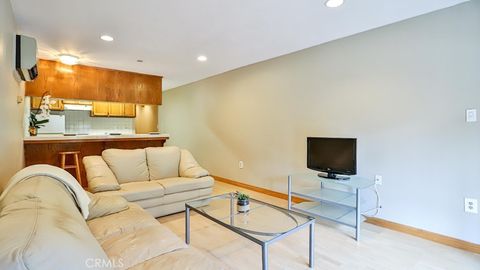
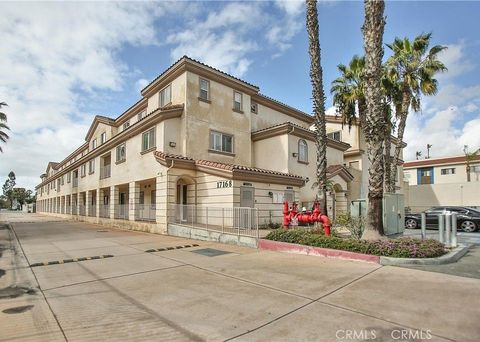
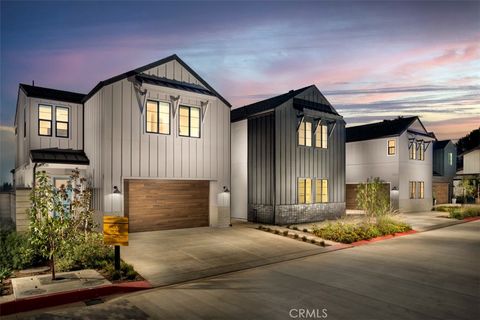
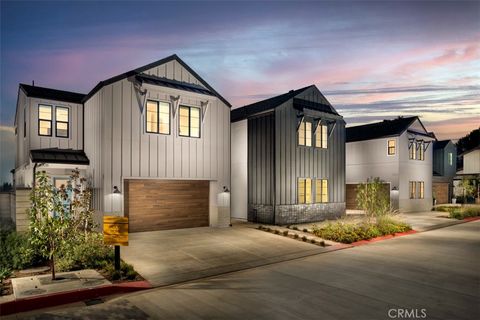
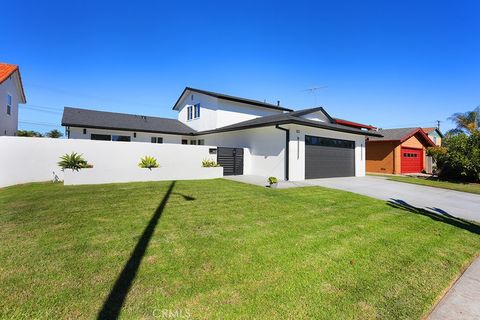

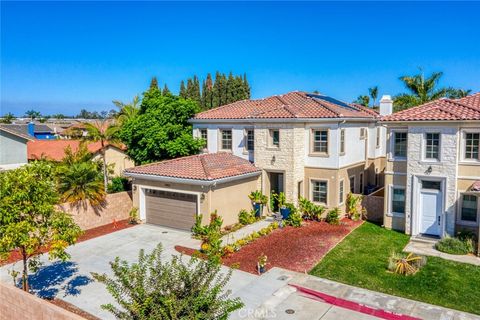


These (Mortgage) Rates are on Fire!
Mortgage interest rates have already risen by over a quarter of a percentage point in 2018. Many are projecting that rates could increase to 5% by the end of the year. Since the housing collapse 10 years ago, the U.S Federal Reserve has maintained a loose monetary policy, keeping interest rates low and providing easy access to credit. But with the economy nearing full employment and corporate America raking in record profits, the Fed’s policy is tightening. After years of a fixed 30-year mortgage interest rate below 4 %, that rate is now 4.5% What impact will rising rates have on house values? Well, many quickly jump to the conclusion that an increase in mortgage rates will have a detrimental impact on real estate prices as fewer buyers will be able to qualify for a loan. This seems logical; if there is less demand for housing then prices will drop. However, in a good economy, rising mortgage rates increase demand as many prospective purchasers immediately jump off the fence to guarantee they get the lower rate. Anxiety over rising interest rates was one of the factors that caused the recent stock market swings, and it’s only a matter of time before rising rates seep into the housing market. For prospective homebuyers, rising rates might put some pressure on finding a home sooner than later, as rates are unlikely to get better than they are now. A sense of urgency would be justified because the lower the rate a homebuyer can lock into, the easier it’ll be to make a monthly payment. For a homeowner with a variable-rate mortgage, rising rates would lead to suddenly higher mortgage payments. CoreLogic built a model to project what a typical monthly mortgage payment would be if the rates rose by 0.85 percentage points over the next year, which it calculated by averaging multiple rate increase forecasts, including from Freddie Mac, Fannie Mae, and the Mortgage Bankers Association.
The model assumes a 2.6% rise in real home prices. Taking this into account, the typical monthly mortgage payment would rise from $804 to $910, a 13.3 percent increase. However, when the projection is adjusted for inflation, it’s still 36.4 percent below the all-time high of $1,263 set in June 2006. And for further context of the rate itself, even a dramatic rate increase wouldn’t put it near all-time highs. It’s hard to imagine now, but in the early 1980s, the fixed 30-year mortgage rate was about 18 percent. By the 1990s, it fell to about 10 percent and has steadily fallen ever since. In each case, home prices APPRECIATED and did not depreciate. No one is projecting as dramatic an increase in rates as the examples shown. Most are projecting an increase of approximately 1% by the end of the year. The last time mortgage rates increased by 1% over a twelve-month period was January 2013 (3.41%) to January 2014 (4.43%). What happened to house prices during that span? They appreciated by 9.8%.
How a rate hike will affect home values and the market as a whole is murkier. The tax bill passed in December has numerous implications for housing that may not be fully realized for years to come. Bottom Line When mortgage rates increase, history has shown that prices appreciate (and do not depreciate) during that same time span. Now, more than ever, who you work with matters! Our primary goal is to deliver the highest level of service available to each and every one of our clients. We strive to make each of our listings the best they can be. Is now the time for you to make your move? Call me today at 714.343.9294 Visit stovallteam.com
Sources: Micah Stovall, Bloomberg Business Journal, National Association of Realtors